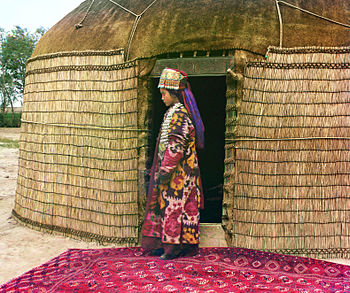Art and Architecture/ART102/Introduction
In simple design terms, architecture adheres to the dictum that form follows function. Architecture's function reflects different human needs. For example, warehouses take the shape of large squares or rectangles because they need only to enclose a space that protects and stores products and materials in the most efficient manner. A home is designed with other functions in mind, including cooking, resting, cleaning and entertaining. So the interior design of a home includes specialized areas for these different functions. A church or school design would have their own set of spatial requirements because they provide for large groups of people at once.
Architecture solves problems concerning the use of space, interior design and the landscape that surrounds it. The limitations imposed on architecture by the laws of physics are solved to a large extent by engineering. The greatest limitations on design are the physical loads exerted by a structure's weight. Compression loads refer to vertical weight and shear loads travel at an angle or horizontally. Buildings need stable foundations and framing systems that support the spanning of open space.
